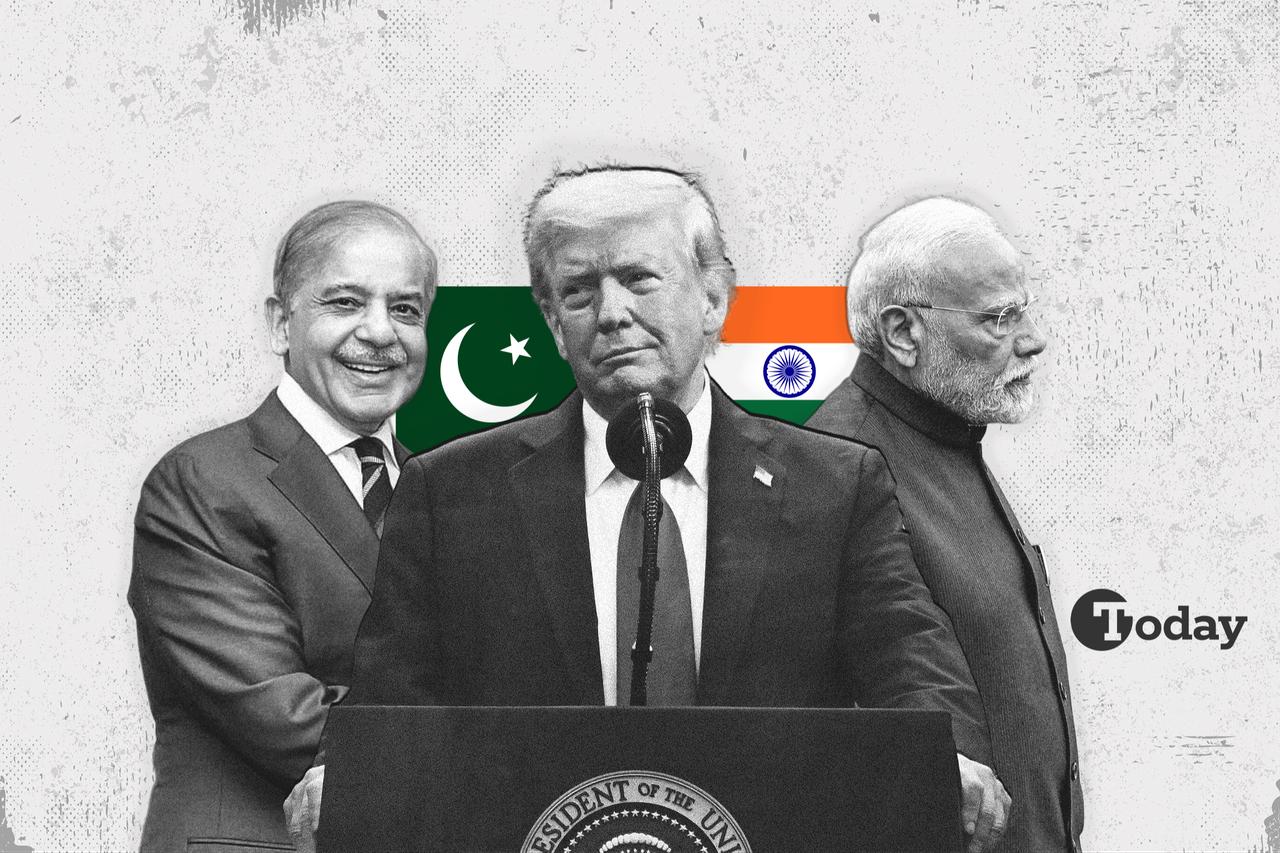
U.S. President Donald Trump has earned a notorious reputation for his transactional style of politics. You really have to offer him a treasure trove to be included in his close circle of allies.
India, which never really secured a seat alongside Australia, Japan, and others within Trump’s circle of the closest allies, enjoyed relatively better relations with the U.S. after the 2000s. Especially during Trump’s first tenure as president, focusing tightly on strategic partnerships in the Indo-Pacific region, defense deals, technology, counterterrorism, and trade talks.
Trump was seen making high-profile appearances in India back in 2019, featuring his famous “Howdy Modi” slogan. Later, he garnered attention with his whimsical attempt to speak Hindi at the Ahmedabad address in 2020.
It's safe to say that New Delhi has been Washington’s reliable pawn to curb China’s rising influence in the region. Times have changed and changed for the worse for India and its new equation with the U.S. president. But what exactly shifted the tides? And how is Islamabad benefiting from the entire U.S. bullying of India situation?
If one had to imagine the same scenario at the beginning of 2025, the situation would have been more farce than fact. Not long ago, Trump touted Indian Prime Minister Narendra Modi as a “much better negotiator than himself” and, in fact, called him a “great friend” in February 2025. The U.S. president believed Modi carries a similar vision for “making India great again”—just like his “make America great again" (MAGA) mantra. In the same universe, Pakistan was walking a tightrope to get through the year while juggling intense International Monetary Fund (IMF) bailouts, fuming India-Pakistan war rhetoric, and, above all, its long-fought fight against terrorism.
Pundits suggest the real triggering point was when Trump—in a quest to earn his earnestly sought Nobel Peace Prize—suddenly emerged as a mediator in the India-Pakistan conflict back in May. This made Modi unhappy, as he was expecting anything but seeing Trump not calling out his nuclear-armed rival, Islamabad, during a historic dogfight. Since then, it seems like New Delhi has failed to find closure.
While Modi has been declining Trump’s calls and visit invitations, Pakistan’s top military official, Asim Munir, has visited the U.S. twice in the past few months, calling it “a new era for Islamabad-Washington” ties.
The change might look sudden, but it gradually swept through the corridors of power. Nonetheless, Trump’s blunt social media posts screamed of a conflict of interest between the world’s superpower and an emerging superpower, as New Delhi likes to call itself. To be precise, the bonhomie between the two populist leaders ran out of time. But here are a few reasons that served as a bone of contention.
Firstly, India’s purchase of Russian oil has led to Washington’s raging tariffs, Trump’s intention to tap into India’s agricultural sector with more access to dairy markets, and his recent coziness toward Islamabad. Lastly, his readiness to speak on the Kashmir conflict—an issue that seems like a skeleton in the closet for New Delhi.
Modi has established himself as a tough leader who is not ready to compromise when it comes to Kashmir and shows no mercy when it comes to Pakistan. This is also one of Modi’s tactics to augment his far-right Hindutva voter base. The Indian premier believes the 78-year-old Kashmir conflict is the country’s internal matter and doesn’t tolerate any third-party intervention.
But the real deal-breaker was still India purchasing Russian oil, resulting in Trump’s frustration, which was clearly seen in his recent posts on social media.
“India is not only buying massive amounts of Russian oil, they are also, for much of the oil purchased, selling it on the open market for big profits. They don’t care how many people in Ukraine are being killed by the Russian War Machine,” the furious U.S. president said on social media.
The spat hit rock bottom when Trump called the Indian economy dead—just like Russia—hinting at his ambitions to strike an impressive oil deal with Pakistan in the near future. Trump’s social media tirade was certainly India’s worst nightmare, but it also sent out a coherent message: Washington was no longer a reliable strategic partner for New Delhi.
Trump imposed staggering 50% tariffs on Indian goods, accusing India of unfair trade practices. But as they say, every misery comes with a hidden opportunity, and this time the opportunity is for Islamabad. Trump seems to be offering a friendlier hand to Pakistan. It offered Islamabad relatively lenient tariff rates (a 19% tariff compared to India's much higher rates), pledging cooperation on exploring the country’s oil reserves.
Meanwhile, Islamabad seems to be capitalizing quite well on this thaw by proactively engaging in lobbying and fostering business ties with U.S. interests, banking on economic collaboration and investments to revive the ailing economy.
Trump’s pivot highlights a strategic balancing act, valuing Pakistan’s counterterrorism cooperation and regional influence.
This is certainly a golden opportunity for Islamabad to leave a mark with lower tariffs, active diplomatic engagement, and promotion of its natural resource potential.